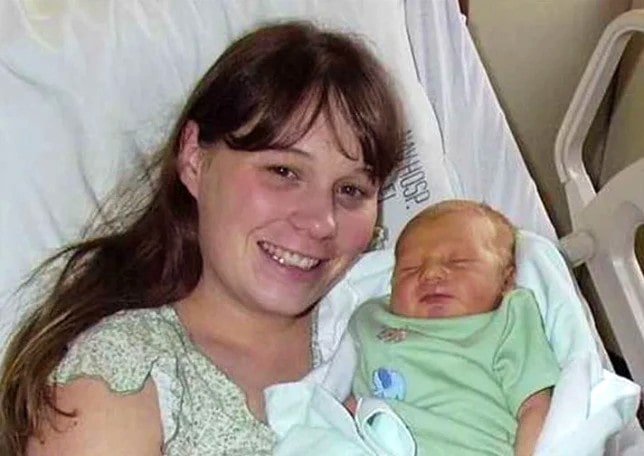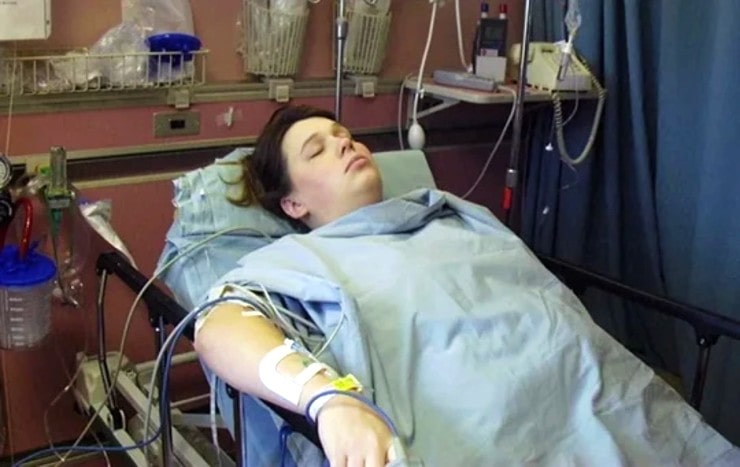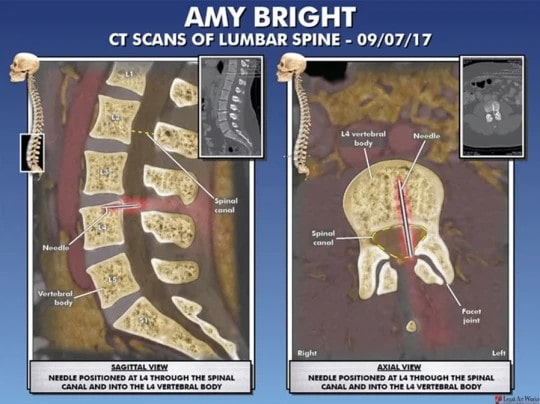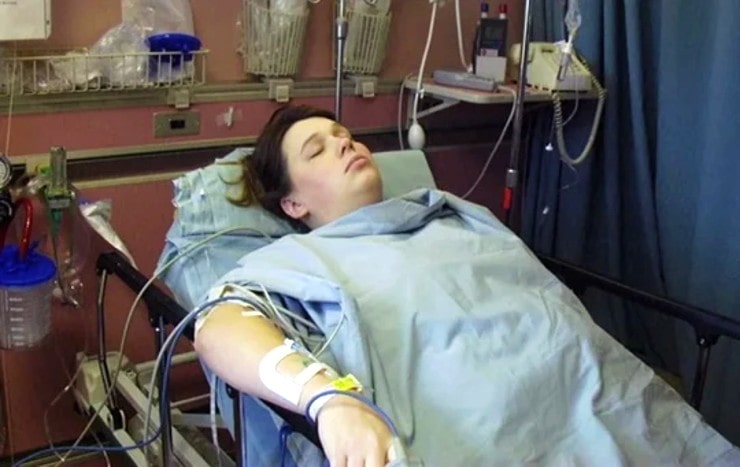An Unfortunate Case of Persistent Pain: A Woman Discovers a 14-Year-Old Epidural Needle in Her Spine
Amy Bright, now 41, describes her tragic experience of excruciating back pain that has afflicted her since giving birth to her youngest son, Jacob, 14 years ago, in a moving narrative of enduring agony.
The traumatic incident began just two months after her cesarean section at a hospital in Jacksonville, Florida.

After years of pain, a ray of hope appeared when a recent CT scan revealed the startling truth: a three cm-long fragment of an epidural needle trapped in her spine.
She was overcome with various feelings, from astonishment and indignation to profound terror resulting from the news.
Amy reflects on the disastrous day she had an epidural injection during Jacob’s birth, a regular treatment that took an unexpected turn.
The needle mysteriously shattered at this critical moment, unbeknownst to Amy and the medical team there.
Amy has suffered dramatically as a result of this sad accident. Her left foot and leg are no longer fully functional due to the significant nerve damage she received.
To her dismay, she characterizes the needle’s existence in her spine as a constant threat, changing and creating pain with every movement—walking, bending, twisting, or even sleeping.
Amy has been inadvertently exacerbating the situation for the past 14 years, naively stimulating the production of scar tissue in her spine, all because of the needle’s constant movement.
Numerous visits to various doctors have resulted in several prescriptions, ranging from painkillers and muscle relaxants to other medications, all aimed at reducing her ongoing misery.
Amy’s depiction of her condition offers a clear picture of her daily agony. She compares the sensation to having a searing rod rubbed against her tailbone, a continual reminder of her plight.

The excruciating agony occasionally spreads down the left side of her calf and into her foot. It is a constant reminder of the foreign object lodged deep within her spine, wreaking havoc and depriving her of a pain-free life.
Amy Bright and her lawyer, Sean Cronin, have launched a daring legal struggle against the federal government, holding them liable for the permanent nerve damage caused by the needle.
Amy’s medical records, according to Cronin, show conclusive evidence of a failed spinal needle attempt at Naval Hospital Jacksonville in September 2003, proving beyond a shadow of a doubt that no other medical expert inserted a needle in her back.
Their lawsuit alleges that Florida’s Naval Hospital staff, where she gave birth, was aware of the broken needle but decided to overlook it, ignoring their duty to correct the problem and avert the impending injury.
Even if the needle is removed swiftly, Amy faces the terrifying prospect of irreversible paralysis, as revealed by her attending physician.
As a result, she must accept that her future will be inextricably entwined with controlling her injury through a combination of painkillers and physical therapy.

When she reflects on the present, Amy acknowledges that the pain has reached an excruciating climax, an unending burn that torments her incessantly.
The uncertainty surrounding her future weighs heavily on her, causing her uneasiness.
She sees her leg diminishing with each passing day, and she fears that a wheelchair may become her only mode of transportation.
“I’m plagued by fear of the unknown,” Amy admits. “I am terrified and suspicious about what lies ahead.”
Her unyielding bravery shines through as she faces an uncertain future, fighting heroically for justice while desperately yearning for relief from the horrific suffering that has become inseparable from her existence.




